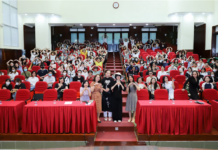Seafood and green onion savory pancakes, or haemul pajeon, are thin savory cakes made from lots of green onions and bits of seafood.
The Dongnae neighborhood of Busan is particularly famous for its haemul pajeon, so much so that haemul pajeon is often called Dongnae pajeon. Dongnae is known for its tasty green onions and people say that the savory cakes made in Dongnae for lunch on market days grew into today’s seafood and green onion savory pancake. Dongnae pajeon was so delicious that it was even offered to the king during Joseon times (1392-1910).
Haemul pajeon is still a popular dish today. This dish is particularly popular on windy or rainy days. There are many stories explaining this tradition. Some say that it’s because the sound of raindrops is similar to the sound of frying a savory pancake. Others say that it’s because of the humidity, as the high humidity on rainy days can spread the smell of frying even farther down the street, luring diners through their olfactory senses.
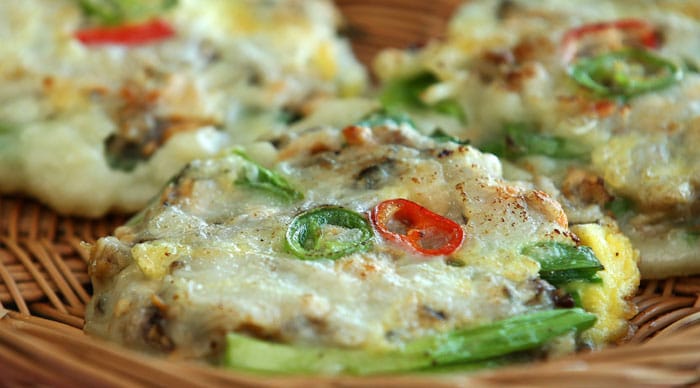
Seafood and green onion savory pancakes are characterized by their harmonized taste of soft green onions and various kinds of fresh seafood.
** Ingredients
100 grams mussels
70 grams clams
70 grams oysters
1 kilogram (5 cups) water
2 grams (0.5 teaspoon) salt
— Seasoning:
4 grams (1 teaspoon) salt
0.3 grams (0.125 teaspoon) ground black pepper
200 grams small green onion
10 grams or about 1 green pepper
15 grams or about 1 red pepper
— Dough:
95 grams (1 cup) wheat flour
30 grams (0.33 cups) non-glutinous rice powder
1 gram (0.25 teaspoon) salt
200 grams (1 cup) water
60 grams or about 1 egg
85 grams (0.5 cup) oil
— Vinegar soy sauce:
18 grams (1 tablespoon) soy sauce
15 grams (1 tablespoon) vinegar
15 grams (1 tablespoon) water
** Preparation
1. Softly wash the seafood in salt water and drain off the water using a strainer. Shred the pieces into 1 centimeter-wide pieces. Season with salt and black pepper. Leave to sit for 10 minutes.
2. Seed and cut the green and red peppers into 2 centimeter-long and 0.3 centimeter-thick diagonal pieces. Trim and wash the small green onion and cut it into 10 centimeter slices.
3. Add the non-glutinous rice powder, salt and water to the wheat flour. Mix thoroughly.
4. Beat the egg.
5. Blend in the vinegar soy sauce.
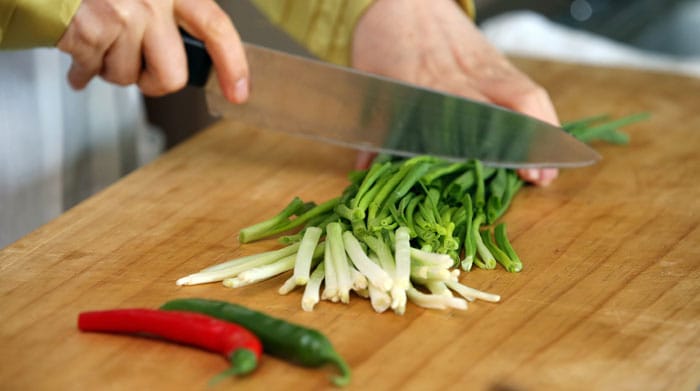
Cut the green and red pepper into diagonal 2 centimeter slices. Trim and wash the small green onion and cut it into 10 centimeter strips.
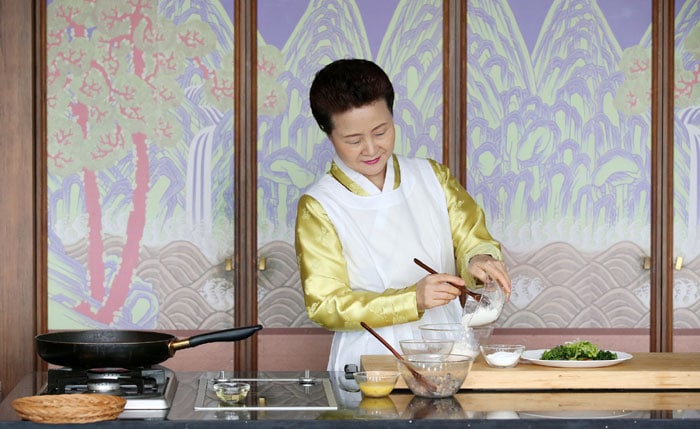
Add the non-glutinous rice powder, salt and water to the wheat flour. Mix thoroughly with other ingredients.
** Cooking
1. Preheat a frying pan with oil. Over a medium heat, put a spoonful of dough into the pan.
2. Place a piece of green onion in the dough and add bits of seafood and green and red pepper. Ladle another spoonful of dough on top of this and pour 2-3 tablespoons of beaten egg over it.
3. Over a medium heat, fry it for 5 minutes. When the bottom is well-done, flip it once, put a lid on the pan and cook it for another 3 minutes.
4. Serve with the vinegar soy sauce.
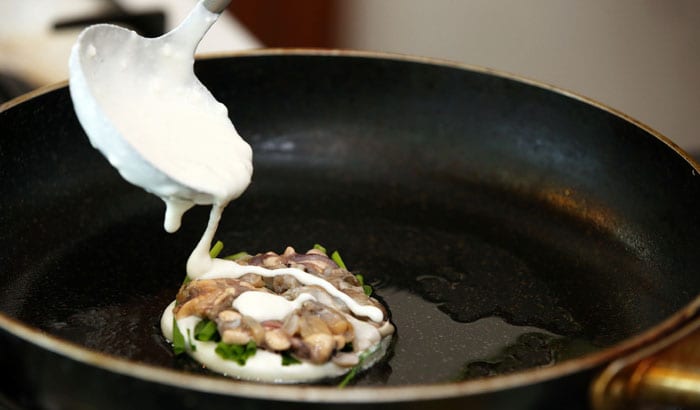
Pour the dough in a circle and then add the bits of seafood, green pepper and red pepper over medium heat.
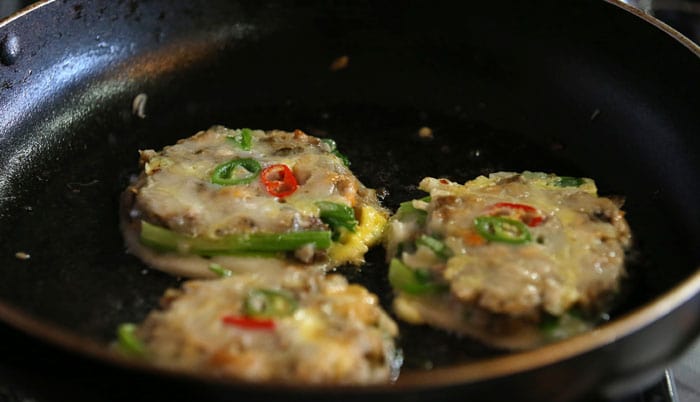
Fry the savory dough cakes for five minutes over medium heat. When the bottom is well-done, flip it, put a lid on the pan and cook it for another 3 minutes.
Managed by Yoon Sojung
Photos: Jeon Han
Korea.net Staff Writers
In cooperation with the Institute of Traditional Korean Food (ITKF)
Content from “The Beauty of Korean Food: 100 Best-Loved Recipes”
arete@korea.kr


